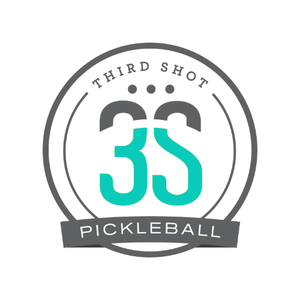By Mark Renneson
For me, the US Open and other major tournaments are a combination of costume party and scavenger hunt. I love hearing whispers like "Have you seen the 'new girl' Kaitlyn Christian yet? I hear she's incredible" or "Do you know that Jeff Warnick guy? You've got to see his technique. It's wild. But he's crazy good!". I like trying to discover who these new people ar and then watching them play. I posted daily videos of the US open here, here, here, here, here, and below.
But it is also fun for me to take the pulse of pickleball in general and to see where the game stands now compared to what I saw at this time last year. I like wandering around and watching, not quite knowing what I'll see but being open to anything. I especially enjoy watching how the game -- at a high level especially -- is evolving. That evolution, in a nutshell, is what this post is about.
Power Please
I have written before that pickleball continues to get quicker. Players are hitting harder, moving faster and being more offensive-minded as they play. Seves are being used to cause trouble for the opponents, and if that ball is returned short -- and sometimes even if it isn't -- and being driven at the net players. Balls that I expect to be dinked back over the net safely, are now attackable balls that players are putting so much topspin on, that shots that would have sailed out 3 years ago are now curling and dropping just inside the baseline.
Sliding
The balls are moving faster and the players are too! People like Kaitlyn Christian continue to rip up the hardcourt as they slide gracefully into a forehand. Exceptional balance, strength and a hate for letting the ball bounce twice are allowing them to not only get to more balls than players of another generation, but hit them back with quality. This technique would definitely fit in the "do not try at home" category for most people!
Stacking
As competition gets fiercer, players are looking to gain any advantage they can. And one way to gain an upper hand is to make sure that you are always playing on the side you prefer. The pros have been stacking for a long time, but I'm seeing more intermediate players do it as well. For those who are new to the idea, stacking is putting you and your partner on the same side of the court. After you hit your serve or return (as per your obligation), you then move over to the side of the court upon which you'd rather play.
2-Handed Backhands
Unfortunately, some PB 'purists' think that only one hand can touch the paddle. That's silly! Most of the top women use two-handers to get extra stability and power when hitting from their non-dominant side. We're even seen more of the guys doing it too! And with longer-handled paddles becoming the norm, why not? A two-handed backhand is a great way to shore up your backhand if it is currently a liability.
There are lots of other things I saw at the US Open and I'll be posting about them here over the next few weeks. Stay tuned!


